Otford Palace
Since 2019, the site has been maintained and restored by The Archbishop’s Palace Conservation Trust (APCT) under a 99-year lease from Sevenoaks District Council.[1] A fragment of a Chi Rho monogram, painted on Roman wall plaster, was recovered from the fill of a Norman drain that was infilled when the medieval manor was enlarged by Archbishop Robert Winchelsey in the early fourteenth century.The first of these was by King Coenwulf of Mercia, and the second by Ceolwulf I, his brother and successor, who donated lands at Otford bordering the eastern bank of the River Darent between Shoreham and what is now Bat and Ball.[3] The second charter, in which Ceolwulf grants Wulfred, Archbishop of Canterbury, five plough lands consisting of two groups—one lying northwest of Kemsing and the other to the southwest—can be found in the British Museum.[3] It appears from sporadic records that by the time of Henry VIII’s accession, Archbishop William Warham had begun remodelling and extending the medieval house.[6] In 1514, Archbishop Warham, frustrated by the City Fathers at Canterbury who refused to allow him to build a new palace there, commenced work in Otford.In May 1520, King Henry VIII and Catherine of Aragon travelled up the Darent Valley from Greenwich Palace with an enormous retinue and stayed overnight on their way to the Field of the Cloth of Gold.A survey (c. 1537) recorded that the bridge led to the forebay or forefront of the Gallery, well constructed of freestone with large bay windows extending outward, following a uniform plan along the entire northern part of the moat.The principal surviving remains are the North-West Tower, the lower gallery (now converted into cottages), and part of the Great Gatehouse.This gallery formed a circuitous walkway with glazed windows, allowing exercise in poor weather or after dark, and providing a space for discreet conversation.The surviving ground floor of the western half of the Gatehouse was originally one large chamber with a porter's lodge at the front.[6] An external stair at the south end led to a two-room lodging on the first floor, flanking a central room over the gate passage.Otford Palace is of exceptional significance for: • The evidence it provides regarding the form and architectural character of one of the outstanding buildings of early 16th-century England.Otford Palace is of some significance for: • Illustrating, especially with the archive material, the struggle to conserve historic places during the 20th century.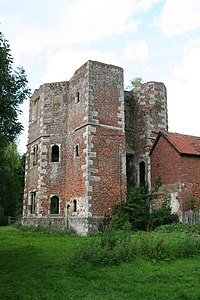

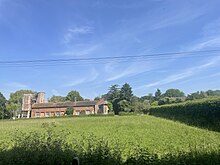


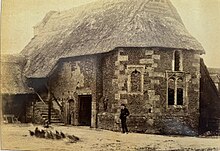

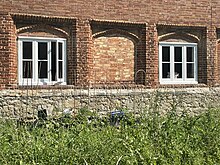


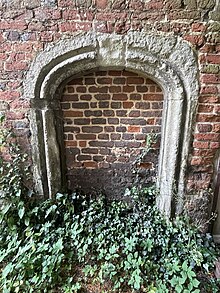

Otfordcivil parishSevenoaks DistrictRiver DarentNorth DownsSevenoaks District CouncilChi RhoRobert WinchelseyMerciaKentish SaxonsBattle of OtfordChrist Church CanterburyArchbishops of CanterburyCoenwulf of MerciaCeolwulf IShorehamWulfredKemsingBritish MuseumDomesday BookThomas BecketEdward IIIsede vacanteWilliam WarhamHans Holbein the YoungerErasmusCardinal WolseyHampton CourtLorenzo Campeggiocardinal a latereHenry VIIICatherine of AragonGreenwich PalaceField of the Cloth of GoldThomas CranmerElizabeth IHenry SidneyViscount LislegarderobesragstoneLambeth PalaceArchbishop of CanterburyPrimate of All EnglandStephen CottrellArchbishop of YorkList of Archbishops of CanterburyProvince of CanterburySarah MullallyBishop of LondonDiocese of CanterburyRose Hudson-WilkinBishop of DoverCanterbury CathedralOld Palace, CanterburyDavid UrquhartHugh NelsonBishop to the ForcesJonathan ClarkBishop for the Falkland IslandsBekesbourneArchbishop's Palace, CharingArchbishop's Palace, MaidstoneKnole HouseAddington PalaceCroydon Palace